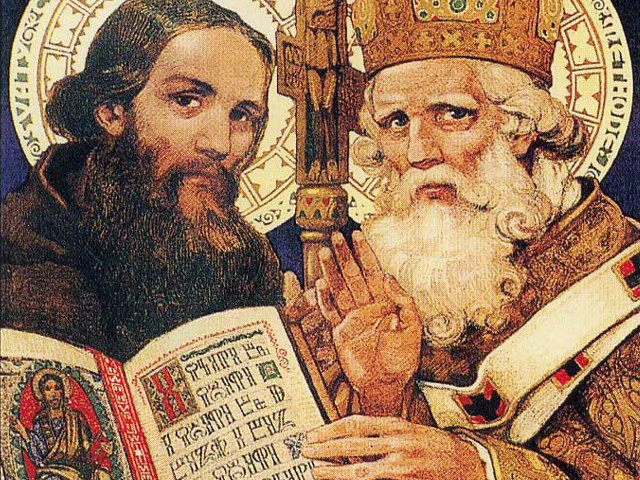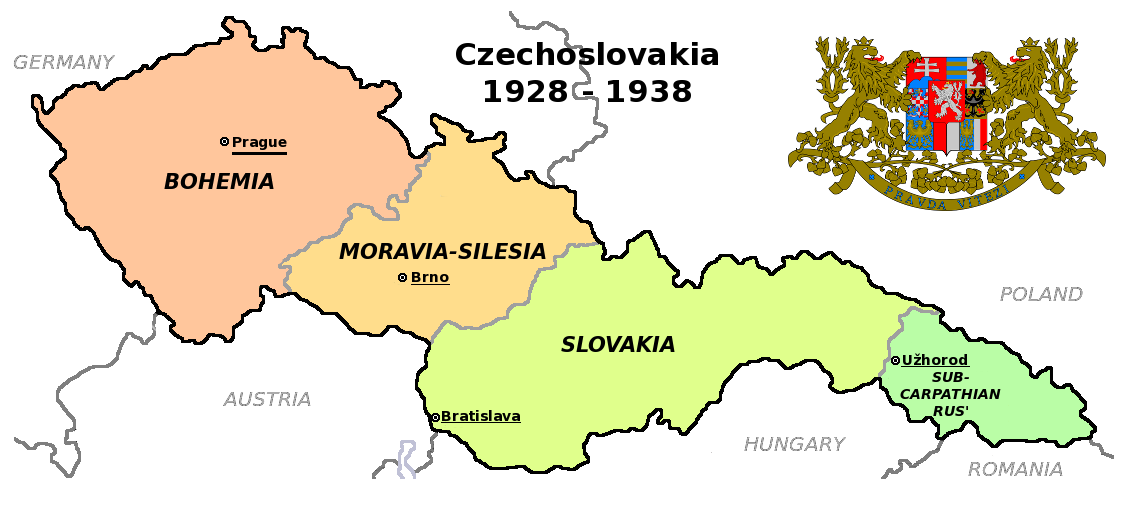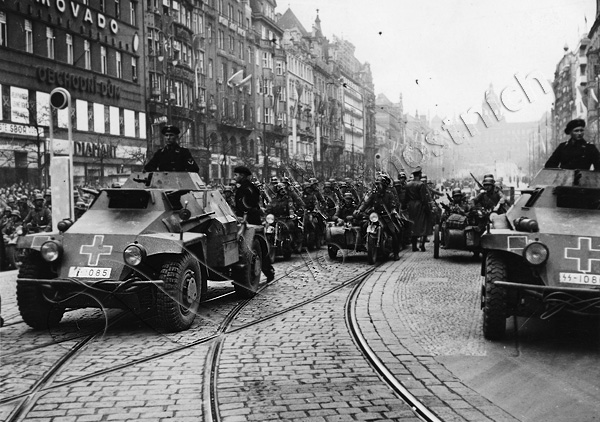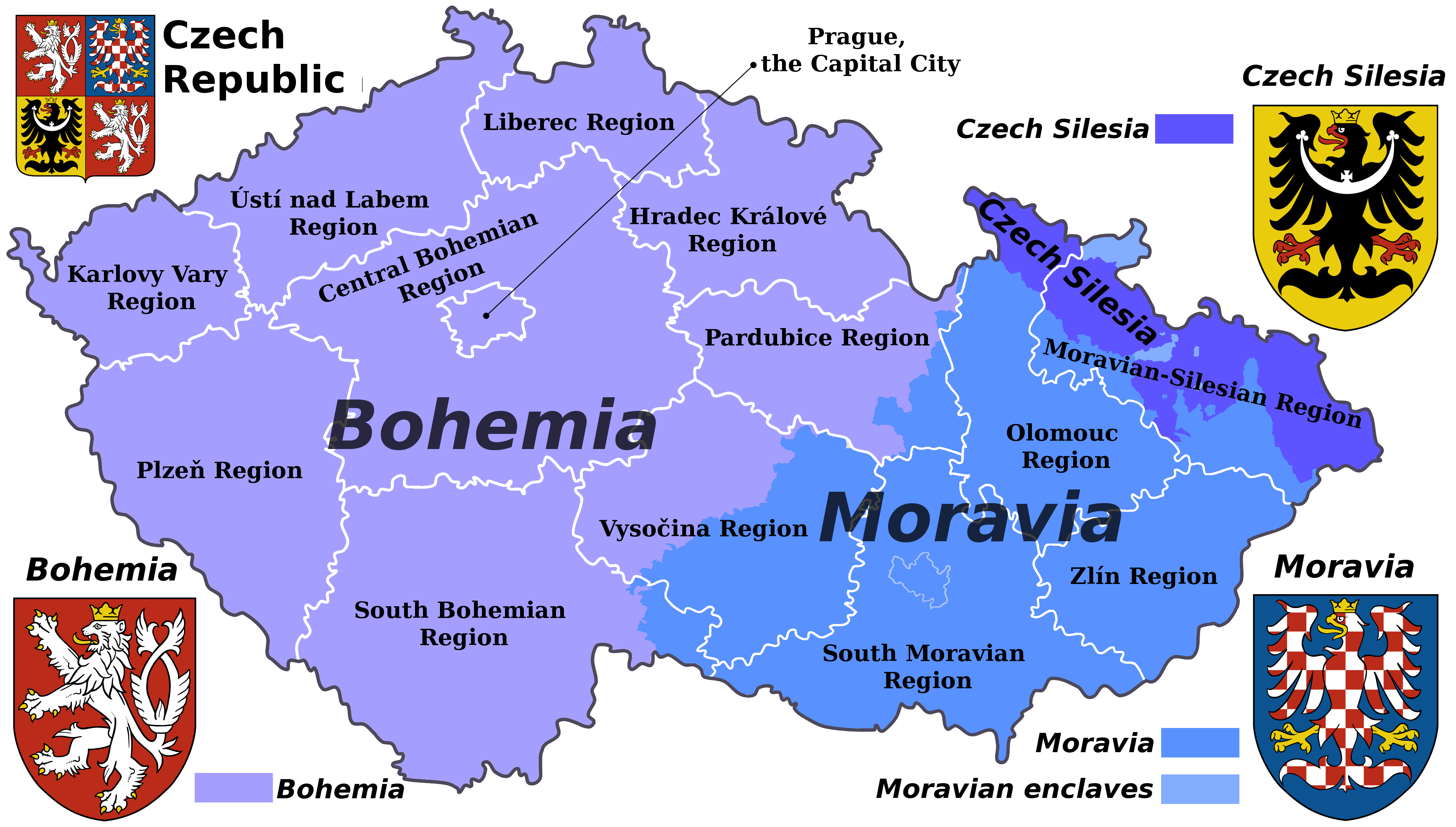Brief History of the Czech Republic
Basic historical outline of specific periods of the Czech history are presented - the Great Moravian Empire (9th century), the Premyslid Dynasty (9-14th century), the Luxembourg Dynasty (14-15th century), the Hussite Revolution (1419 - 1436), The Jagellon Dynasty (15-16th century), the Habsburg Dynasty (16-20th century), the foundation of the modern Czech nation and an independent state (since 1918).
Basic Historical Outline:
4th century BC – Celtic culture
- Around the 4th century BC, the present-day Czech Republic was populated by Celts. They were the first ethnic group to arrive in the area, the Celtic Boii tribe giving the country its Latin name - Boiohaemum (Bohemia). Later, they were pushed out by the German tribes (Marcomanni, Quidi).

5th-6th century - arrival of Slavs
- At the end of 5th and the beginning of 6th century, Slavic tribes settled in the territory of Bohemia and Moravia. The first half of the 7th century marks the first successful attempt to unite the Slavic tribes with the birth of the so-called "Samo's kingdom".

Second half of the 9th century - arrival of Christian missionaries
- During the last two-thirds of the 9th century the Great Moravian Empire was created, later destroyed by the Magyars in 903-907.
- The Great Moravian Empire substentially influenced the development of culture and religion among the Eastern and Southern Slavs. In 863, the Byzantine Christian missionaries Constantin and Methodius came to Moravia to introduce the Slavic liturgy there. However, very soon the influence of the Roman Catholic Church expanded, proving to be decisive in the course of the history of Bohemia and Moravia.

9th century - 1306 a gradual strengthening of the Czech state during the reign of the Premyslid dynasty
- During the reign of the Premyslid dynasty, the Czech state gradually grew in strength and succeeded in preserving its actual sovereignty despite formal vassal ties to the Holy Roman Empire.
- 935 - death of Prince Wenceslas, the patron saint of Bohemia
- 973-976 - establishment of the Prague Bishopric
- 1085 - Vratislav became the first Bohemian prince to be granted the right to use a royal title, as a reward for his support of the Emperor Henry IV during the struggle with Pope Gregory VII.
- 1212 - Premysl Otakar I received The Golden Bull of Sicily, a decree proclaiming Bohemia a kingdom and Bohemian princes hereditary kings. Bohemia thus became one of the most important states within the framework of the Empire.
- 1253-1278 - the reign of the powerful king Premysl Otakar II was characterized by a policy of expansion of power. This expansionist tendency continued with the following reigns of the Premyslid dynasty.
- 1306 - the murder of Wenceslas III and the Premyslid dynasty dies out.
1346-1378 – reign of Charles IV from the Luxembourg Dynasty, the peak in the prestige and power of the kingdom of Bohemia
- The reign of the dynasty began when John of Luxembourg (1310-1346) was elected King of Bohemia in 1310. The Luxembourg kings thus added new regions to their kingdom. The Czech realm was named The Crownlands of Bohemia, a term made official by a decree of Charles IV in 1348. The official Crownlands were made up of the kingdom of Bohemia and the so-called adjoining lands - the margravate of Moravia, the Silesian principalities, Upper Lusatia and, from 1368, Lower Lusatia too.
-
The kingdom of Bohemia reached its peak of power and prestige during the reign of Charles IV (1346-1378), the second Luxembourg on the throne of Bohemia: in 1344 the Prague Archbishopric was founded, in 1348 Charles University, the first university north of the Alps, was founded, and Charles IV was crowned the Roman Emperor in Rome in 1355.

Beginning of the 15th century - a crisis of state leads to the Hussite movement
- The reform movement called the Hussite Revolution (1419 - 1436) was, among others, caused by the economic and political crisis during the reign of Wenceslas IV (1378-1419), the successor of Charles IV. This crisis was exacerbated by the problems in the then-Europe (the Great Schism, criticism of the Church). The Hussite movement was inspired by the ideas of Master Jan Hus, a preacher who was burnt at the stake in 1415 in Constance. Despite his death, his supporters successfully continued in their efforts to reform the Church.
- Heir to the crown of Bohemia, the Roman Emperor Sigismund, tried to defeat the growing revolution with force, but the Hussites resisted his five consecutive crusades in the years 1420-1431. Only the victory of 1434, when the moderates defeated the radicals, opened the way for a temporary agreement between the Hussite Bohemia and the Catholic Europe. This agreement, The Compacts of Basle was proclaimed in 1436 and confirmed the Hussite denomination, and would later be paralleled by the Reformation of the 16th century. The Hussite movement has changed the structure of society in many ways and created religious dualism for the first time in Christian Europe.
- With the decline in the Church‘s power and prosperity, the nobility and towns were able to profit. The Czech nation and Czech culture came to the forefront of social life. In the years of unrest, a Czech noble - George of Podebrady, a skillful diplomat and a man of outstanding personality, became the leader of Czech political life. He was elected King of Bohemia in 1458. His diplomatic activities - notably his effort to establish a peace confederation of the European sovereigns - even reached beyond the horizon of central Europe.

1471 – 1526 – the Jagellon Dynasty
- 1471-1516 - Vladislav Jagellon, a son of King Cazimir of Poland, was elected the King of Bohemia. During the reigns of Vladislav and his son Louis, the power of the Estates grew, while the royal power diminished. A conflict between royal towns and nobles took place, as well as the religious struggles between the Hussite Church and the minority Catholic Church which aimed to regain its former power.
1526 - 1918 - the Habsburg dynasty at the throne of Bohemia
- The Habsburgs of Austria succeeded to the throne of Bohemia when the Jagellon line died out . The Habsburg rule brought the re-introduction of the Roman Catholic faith, centralization and the construction of a multi-national empire. The Habsburgs included the Crownlands of Bohemia in their monarchy, and they remained a part of the Habsburg empire until 1918.
- 1620 - the defeat of the Bohemian Estates at the Battle of White Mountain, continued centralization of the Habsburg Empire
- When Rudolf II (1576-1611), during his reign, left Vienna for Prague, Bohemian capital grew into an important center of European culture. The Czech Estates forced Rudolf II to issue a decree - so called "Maiestatus" - proclaiming freedom of religious confession. The Emperors Matthias and Ferdinand tried to limit this freedom and their efforts sparked a civil war between the Estates and the Catholic Emperor which later spread into Europe underthe name of the Thirty Years' War. The Czechs elected an independent king, however, the Estates were defeated in 1620 at the Battle of the White Mountain and the Kingdom of Bohemia lost its independence for the following almost 300 years. The period of the Thirty Years' War brought political disorder and economic devastation to Bohemia which had far-reaching consequences on the future development of the country. The people of Bohemia were forced to accept the Catholic faith or to emigrate. The throne of Bohemia was made hereditary in the Habsburg dynasty and the most important offices were transferred permanently to Vienna.
- In the period after the end of the Thirty Years' War high Baroque culture became deeply rooted in Bohemia. Czech Baroque influenced the architecture of Czech towns and villages for several centuries.
- A crisis of feudalism and the fiscal interests of the state led to the Enlightment reforms of Maria Theresa and Joseph II in the second half of the 18th century. The reforms brought some positive results as Bohemia and the margravate of Moravia each became an independent part of the Habsburg Monarchy. There were some negative results however. The reforms contributed to the centralization of power and to Germanization, which proved to be a serious threat to the identity of the Slavic nationalities of the empire.

28.10.1918 - foundation of Czechoslovakia, an independent state of Czechs and Slovaks
- Although the Czech national revival movement originally aspired only to a revival of the Czech language and culture, it soon began to strive for political emancipation. In the revolutionary year 1848, Czech politicians made the first coherent political propositions aimed at rebuilding the empire into a federalist state. A desire for national emancipation was supported by the quick industrialization of Bohemia, which made the country the most developed land of the monarchy in the second half of the 19th century.
- In the years during World War I Czech politics took a turn towards radicalism as a result of the activities abroad of T. G. Masaryk and E. Benes, the future presidents. The defeat of the Austria-Hungary cleared the way for the foundation of an independent state of Czechs and Slovaks (28.10.1918). The Czechoslovak Republic became one of the ten most developed countries of the world. A period of twenty years of democracy and prosperity was ended by the aggression of Hitler's Germany. The conference in Munich and the following German occupation in March 1939 brought the end of the independent Czech state.

15.3.1939 - 9.5.1945 - German occupation during the World War II.
- In October 1938, the Nazis occupied the Czech Sudetenland, with the acquiescence of Great Britain and France after the infamous Munich Agreement. In March 1939, Germany occupied Bohemia and Moravia.

February 1948 - Communist takeover
- After the World War II, the restored republic became part of the Soviet sphere of power. A period of "limited" democracy was ended by a Communist takeover in February 1948. All private property was expropriated and political and human rights were supressed. In August 1968, the "Prague Spring", an attempt to change and humanize the Communist totality and to weaken the ties to the Soviet Union failed when the Soviet and Warshaw Pact armies invaded the country in August 1968.

November 1989 - fall of the Communist regime
- The gradual decay of the Communist regime and the Soviet empire, and the mass protests and demonstrations of the Czechoslovak people culminated in the overthrow of the Communist regime in November 1989. The changes were confirmed by the election of Vaclav Havel as president of the republic.

1.1. 1993 – the modern Czech Republic founded after the split of Czechoslovakia
- On January 1, 1993, the Czechoslovak state was peacefully divided and the independent Czech and Slovak Republics were founded. Václav Havel was elected the Czech Republic‘s first president. In the following years the Czech Republic joined the Organisation for Economic Cooperation and Development-OECD (1994), NATO (1999) and the EU (2004). The Czechs have completed the transformation of the formerly centralized state system into a parliamentary democracy and a market economy.








Follow us on